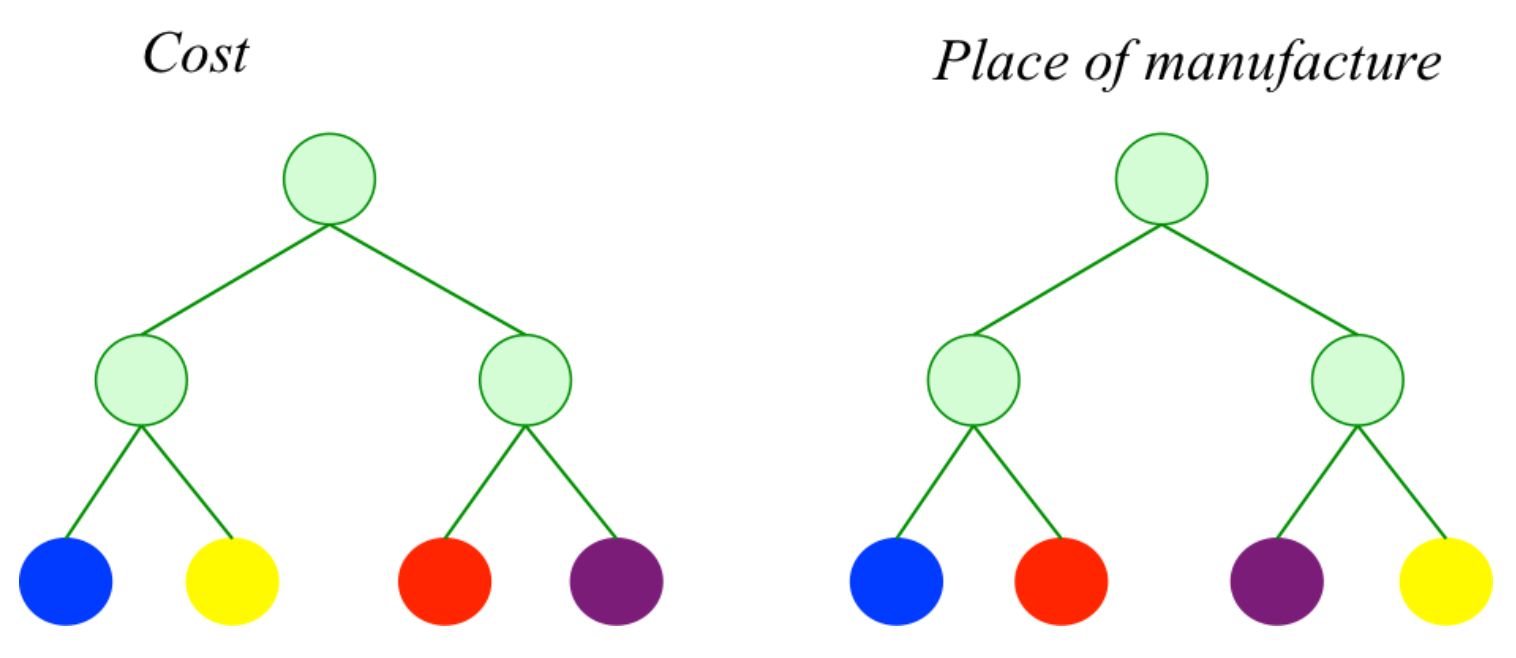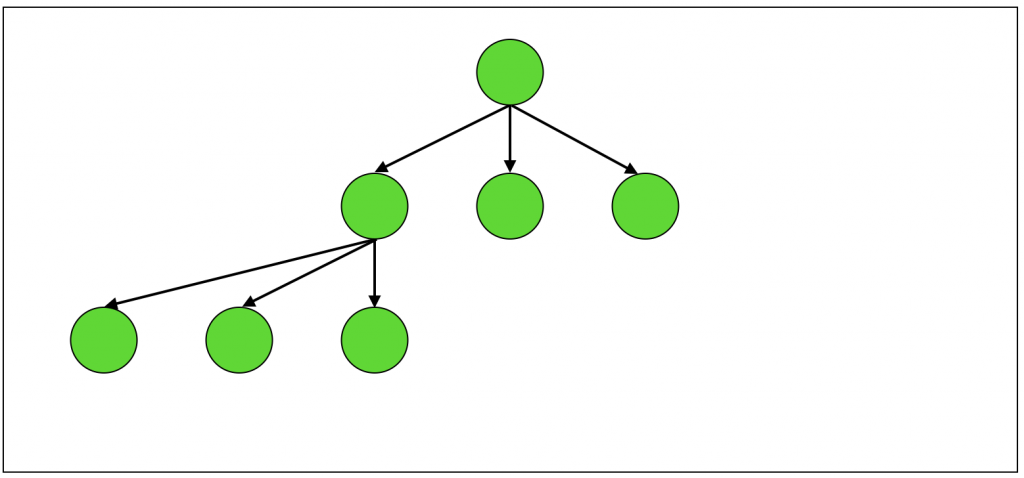Advanced: The background for this approach
This approach derives from Hinkle's pioneering work (Hinkle, 1965). We have combined it with graph theory, as was done previously by e.g. Reynolds & Gutman, and with facet theory, in the form of orthogonal hierarchical trees.
This approach was described by Rugg & McGeorge in a tutorial article, and by Rugg and co-authors in various other papers. These papers are based on the authors' experiences with this approach in a range of application areas.
Assumptions
This version of laddering is intended for knowledge that is organised into trees as opposed to nets (top diagram opposite). It is designed to handle faceted knowledge, as in the middle diagram opposite, where the same entities are grouped differently depending on the choice of facet. This version is also intended for use with an arbitrary number of hierarchical levels, as opposed to e.g. the Toyota "5 whys" model, which specifies a fixed number of levels.
Laddering can be used upwards (e.g. for higher-level goals) or downwards (e.g. for explanations).
Ethical issues
Laddering upward on goals and values can rapidly lead into a person's core beliefs and values, which they may not be comfortable talking about. Best practice in laddering is to stop as soon as this is a risk. Human elicitors can spot this risk in a live session, but software can't, so we have designed this software to stop after two levels, to minimise the risk.
References and links
Hinkle, D.(1965), The change of personal constructs from the viewpoint of a theory of construct implications. Unpublished PhD thesis, Ohio State University.
Reynolds, TJ & Gutman, J (1988). Laddering theory, method, analysis and interpretation, Journal of Advertising Research, 28, 1.
Rugg, G & McGeorge P (1995).Laddering, Expert Systems, 12, 4.
The Hyde & Rugg website article about laddering is here: https://www.hydeandrugg.com/resources/laddering-overview/
A tree (left) versus a net; in trees, branches never re-join, unlike nets

The same entities can have different groupings in different facets

A tree with three levels
